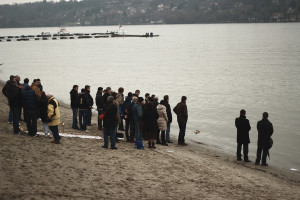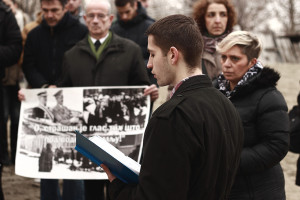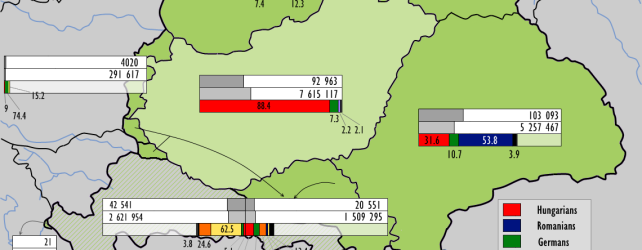On November 24, 2015, the first ever lecture entitled “Genocide committed by Miklosh Horthy“ was held in Serbia, in the town of Kraljevo. The local museum cherishes the memory of the victims of October 1941 German Nazi Genocide against the local Serbian population. This was the first occassion that Kraljevo public was introduced to the crimes committed by Horthy’s regime in northern part of Serbia.
The above mentioned lecture is a good opportunity to clarify the Genocide and Holocaust committed in Serbia by the Nazi occupiers and their collaborators as those facts are not all that known. On April 6, 1941, the Serbian capital Belgrade was bombed by the German forces without the announcement of war. In just a few days, Serbia was occupied and partitioned. Hitler was furious over the fact that on March 27, 1941, the demonstrators in Belgrade toppled the government which signed the pact with him. Fuming with rage, Hitler took revenge. Belgrade was to be destroyed first.
Soon after the occupation of Serbia, the northern Serbian province of Srem was allotted to Vatican-created Independent State of Croatia which aspired to that territory. In the course of the Second World War, Croatian Nazis (called „Ustashi“) committed many crimes against the Serbs and exterminated the local Jewish population. The most horrific was the Croatian death camp Jasenovac, where the crimes were so horrendous that the words are not sufficient to describe them.
The northern Serbian province of Bachka was alloted to the Hungarian regent Miklosh Horthy. In the course of his 3.5 years rule, Horthy exterminated half of the local population, primarily those of theSerbian and Jewish descent. The most gruesome act of Genocide and Holocaust sanctioned by the Hungarian government was carried out in the freezing January 1942, when thousands of innocent civilians were tossed under the ice of the freezing rivers Tisa and Danube! The main purpose of those horrible acts was to exterminate the Serbian and Jewish populations.
The northern Serbian province of Banat was densely populated by the ethnic Germans. Almost 100 per cent of those ethnic Germans aligned with the Nazis. As soon as Serbia was occupied, the local Germans imposed the anti-Jewish regulations even stricter than those in Germany. Four months later, in August 1941, the entire Banat Jewish community was deported to Belgrade and later exterminated in the Nazi-run camp of Sajmiste (women and children) and Topovske supe (men).
The southeastern part of Serbia proper was allotted to Bulgarian Nazi collaborators. They committed various acts of genocide against the Serbian population. In March 1943, all the Jews in Bulgarian occupation zone were deported to German Nazi death camps.
The Serbian province of Kosovo was allotted to the ethnic Albanian collaborators. Besides numerous crimes against the local Serbian population, the Kosovo Albanians aided German Nazis in deporting the local Jewish population to death camps.
The rest of Serbia proper was ruled by the occupation German Nazi forces. Due to Serbian resistance in October 1941, several reprisals took place. Those retributions have the proportions of a genocide since the Nazi occupation authorities murdered 50 civilians for one wounded Nazi soldier, and 100 for each murdered Nazi soldier. Kraljevo was the first victim of Nazi reprisals in mid October 1941, when the local resistance movement almost succeeded to liberate the town. Kraljevo has the strategic geographic location and the Nazis were willing to defend it at all cost and even to exterminate the local Serbian population to that end. Soon after the same reprisals occurred in the Serbian city of Kragujevac.











 in 1996 and embarked on a close examination of the little-known World War II crimes committed by the Nazi Germans and their allies in the former occupied Yugoslavia. His painstaking research has resulted in several works on the
in 1996 and embarked on a close examination of the little-known World War II crimes committed by the Nazi Germans and their allies in the former occupied Yugoslavia. His painstaking research has resulted in several works on the 














